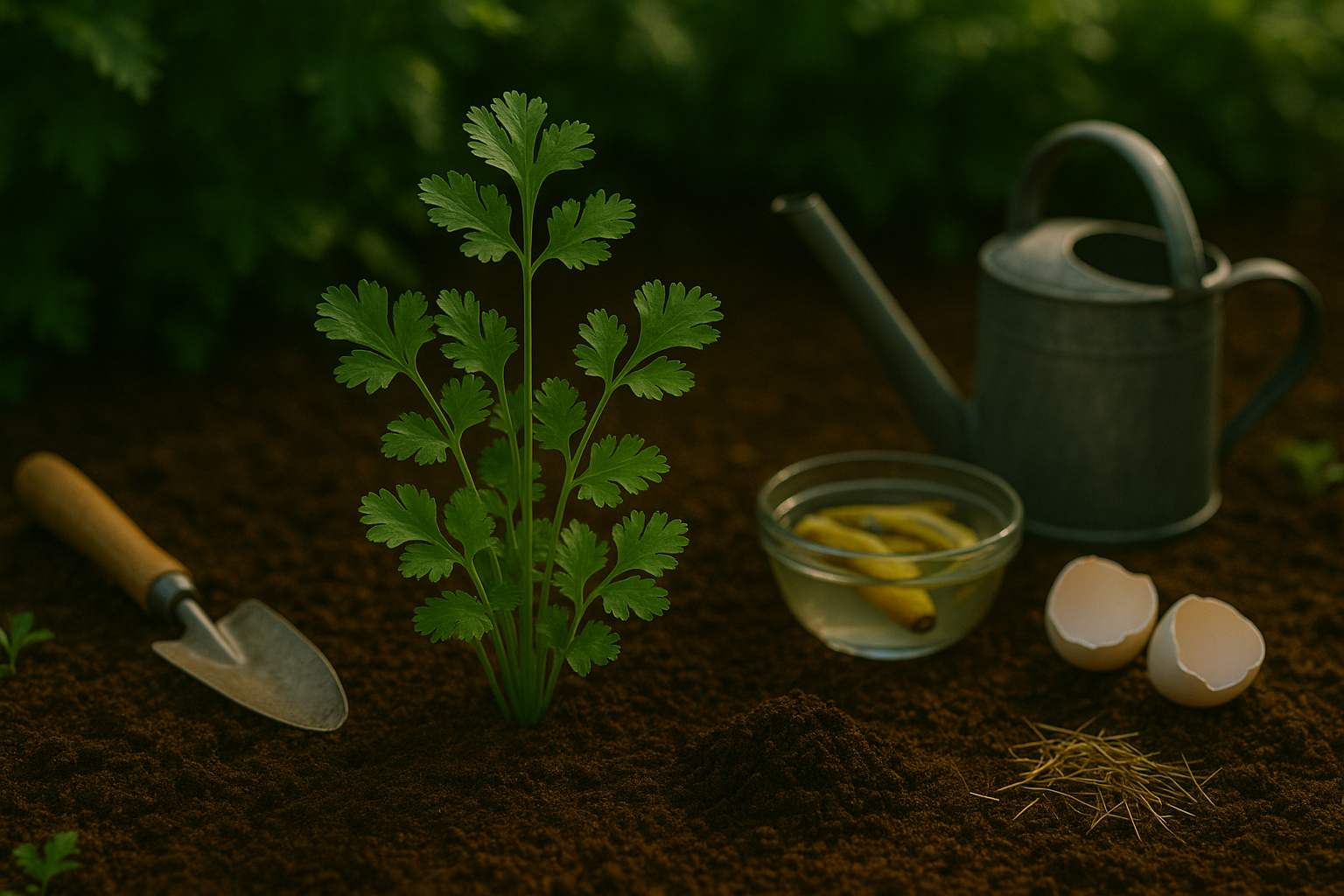Introduction
Fertilizing cilantro is a key step in growing lush, flavorful herbs that add a fresh punch to everything from tacos to salads. Cilantro is a favorite among home gardeners and cooks alike—it’s fast-growing, aromatic, and a staple in countless cuisines. But despite its popularity, cilantro can be a bit tricky: it thrives in cool weather, tends to bolt quickly in heat, and often develops pale leaves or stunted growth if neglected.
That’s where the right fertilizer comes in. Providing cilantro with a steady supply of balanced nutrients not only speeds up its growth but also encourages fuller, leafier plants and enhances the vibrant, zesty flavor everyone loves. On the flip side, skipping fertilization or choosing the wrong type can result in lanky stems, disappointing yields, and leaves that lack their usual punch.
Whether you’re caring for a windowsill pot or an outdoor herb patch, knowing how and when to nourish your cilantro is the secret to a thriving harvest. In this guide, we’ll explore the best fertilizers for cilantro, share easy tips, and help you troubleshoot common growing problems so you can enjoy an endless supply of this delicious herb.
Understanding Cilantro’s Nutrient Needs
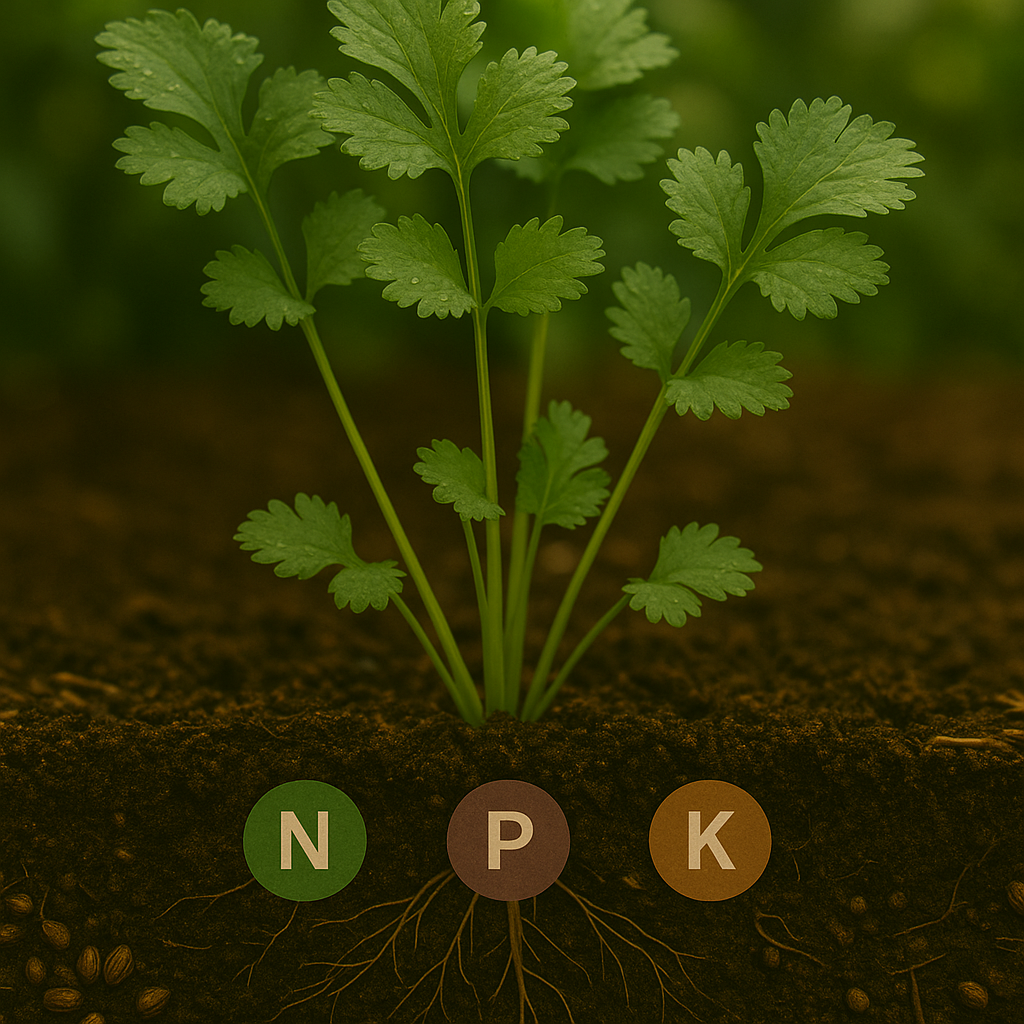
Cilantro thrives when its basic growth needs are met: plenty of sunlight, consistent moisture, and the right balance of nutrients. For best results, plant cilantro in a spot that receives at least four to five hours of direct sunlight daily, though it can tolerate some afternoon shade in hotter climates.
When it comes to watering, cilantro prefers evenly moist soil—never soggy. Let the top inch of soil dry out before watering again.
The real secret to lush cilantro, however, lies in feeding it the proper nutrients. Nitrogen is critical for producing vibrant green leaves, which are the part we harvest the most. If cilantro isn’t getting enough nitrogen, you’ll notice pale, yellowing leaves and stunted, slow growth. Phosphorus supports healthy root development, so a deficiency can lead to weak, spindly plants that struggle to anchor themselves or absorb water. Potassium is vital for overall plant vigor, disease resistance, and stress tolerance. Without enough potassium, cilantro may develop brown leaf edges, limp stems, and become more susceptible to pests.
An easy way to provide all three nutrients is to start with a well-balanced organic fertilizer at planting, then top-dress with compost every few weeks. If you spot yellow leaves, weak stems, or slow-growing plants, consider adjusting your feeding schedule or supplementing with a specialized fertilizer to keep your cilantro patch thriving.
Regularly checking the soil and monitoring your plants’ color and growth rate will help you quickly address any deficiencies before they become bigger problems.
Best Types of Fertilizer for Cilantro
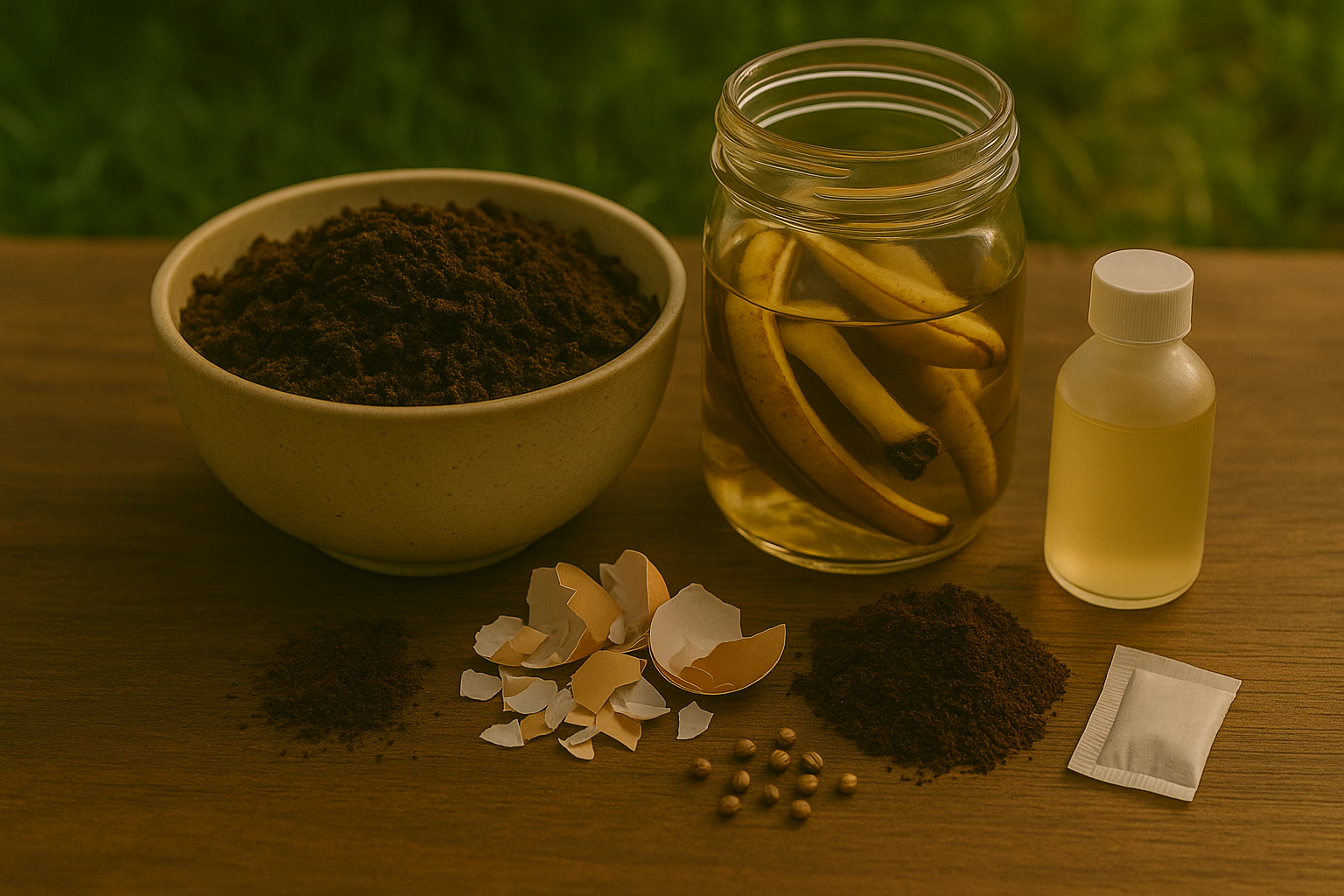
When it comes to feeding cilantro, choosing the right fertilizer can make a big difference in both plant health and the flavor of your harvest. Organic fertilizers, such as compost or liquid fish emulsion, are favored by many home gardeners because they gently feed cilantro while enriching the soil with microbes and nutrients. This not only supports leafy growth but also enhances the herb’s fresh, zesty taste—often considered smoother than cilantro grown with strong synthetic chemicals.
Organic choices are also safer for edible plants since there’s little risk of chemical residue lingering on the leaves you’ll later eat. On the other hand, synthetic fertilizers like slow-release granules can provide a quick nutrient boost and may be more convenient for those with less time or experience. However, over-application can risk “burning” delicate cilantro plants or imparting a sharper, sometimes less pleasant flavor.
For lush, vibrant leaves, look for fertilizers with balanced or slightly nitrogen-leaning NPK ratios—around 5-5-5 or 10-10-10 (NPK stands for nitrogen, phosphorus, and potassium). Nitrogen promotes bushy, green foliage; phosphorus supports healthy root systems; and potassium helps with stress resistance and overall vigor.
Beyond commercial options, common kitchen scraps can also work wonders. For example, banana water (soaking a banana peel in water) is prized for its gentle potassium boost, while eggshell tea or watered-down coffee grounds offer calcium and a tad more acidity that cilantro appreciates. Just remember to use these homemade fixes in moderation and avoid anything salty or oily.
Whichever route you pick, consistency is key: light monthly feedings during the growing season yield the best-tasting, biggest bunches. Experiment to see what helps your cilantro thrive—and never underestimate the power of nutrient-rich, well-loved soil.
When and How to Fertilize Cilantro
Fertilizing cilantro at the right times helps this fast-growing herb thrive without overwhelming it. Start by adding a balanced, slow-release granular fertilizer or compost into the soil at planting—this gives young cilantro roots a gentle nutrient boost as they settle in.
As the plant grows and puts out new leaves, usually about three to four weeks after planting, you can supplement with a diluted liquid fertilizer every three to four weeks, especially if your garden soil isn’t rich.
If using liquid fertilizer, mix it at half the recommended strength and water at the base of the plant to avoid leaf burn. If using dry granules, lightly work them into the soil around the plant, then water well.
Natural amendments like composted manure or worm castings are excellent for cilantro—just work a small handful into the soil once a month. However, avoid over-fertilizing, as too much nitrogen can cause lush leaf growth with poor flavor, and the plant may bolt (flower and seed) early, cutting the harvest short.
For beginners, a simple fertilizer schedule is to amend soil with compost or a balanced granular fertilizer at planting, then feed once monthly with a light dose of liquid or organic fertilizer. Remember to always water after applying any fertilizer to help nutrients reach the roots and keep cilantro growing happy and healthy.
Common Mistakes and How to Avoid Them
Over-fertilization is a common pitfall for gardeners eager to help their plants grow faster, but it can do more harm than good. Too much fertilizer often leads to weak, leggy stems that can’t support healthy growth, burnt or yellowed leaves from chemical buildup, and even fruits or veggies that have a bland or off taste. For example, tomato plants given excessive nutrients might produce lots of lush foliage but very few or tasteless fruits.
On the other hand, under-fertilization can leave plants stunted, with pale leaves and slow, struggling growth because they lack the nutrients needed to thrive. To avoid these issues, watch for warning signs: scorched leaf edges or floppy stems hint at too much fertilizer, while yellowing or undersized leaves suggest too little.
Always follow package instructions and err on the side of caution—less is often more. A simple soil test kit from your garden center can reveal nutrient imbalances, and if you make a mistake, flush the soil with water to dilute excess fertilizer or gently add more if needed, giving your plants time to recover.
Regularly monitoring plant health and adjusting your approach helps keep your garden both productive and healthy.
Signs of Nutrient Deficiency in Cilantro
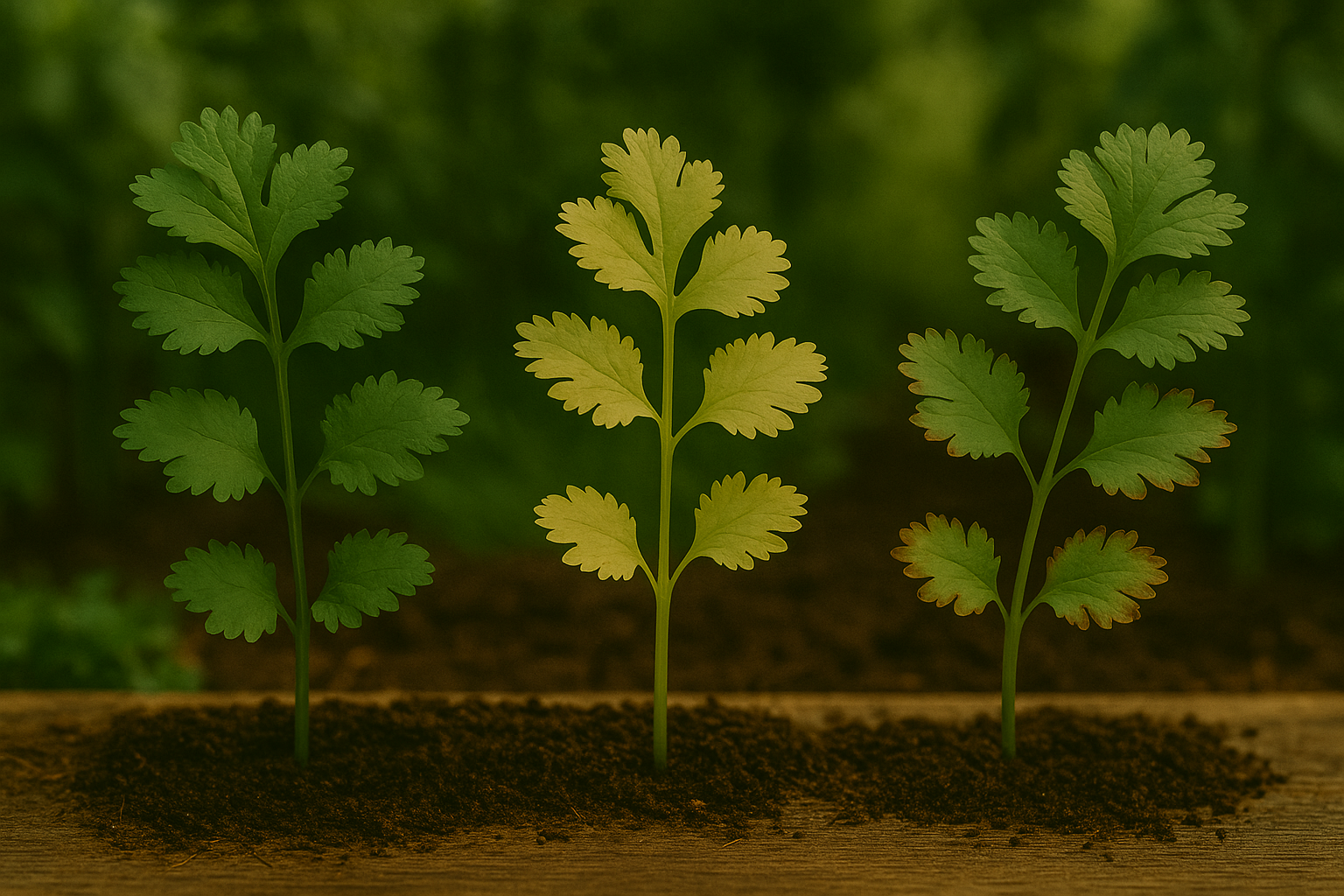
Cilantro plants quickly signal when they’re missing key nutrients, often through clear visual cues. If your cilantro leaves turn pale green or yellow—especially the lower leaves—that’s usually a sign of nitrogen deficiency. Growth may slow, and the stems might become noticeably spindly.
For phosphorus deficiency, look for a reddish or purplish tint on older leaves, along with stunted growth or poor root development. Potassium deficiency often appears as brown scorching or yellowing around the leaf edges, which can spread inward over time and cause the plant to wilt more easily.
If you notice these symptoms, act fast:
- For nitrogen, top-dress with a balanced, water-soluble fertilizer or amend the soil with compost or blood meal.
- Phosphorus issues improve with bone meal or a liquid phosphorus boost.
- Potassium shortages respond to wood ash or organic potassium-rich fertilizers like kelp meal.
Always water deeply after applying any amendment to ensure nutrients reach the root zone. In the long run, regularly testing and enriching your soil with organic matter keeps your cilantro lush and productive, while rotating crops helps prevent future deficiencies.
Natural and DIY Fertilizer Alternatives
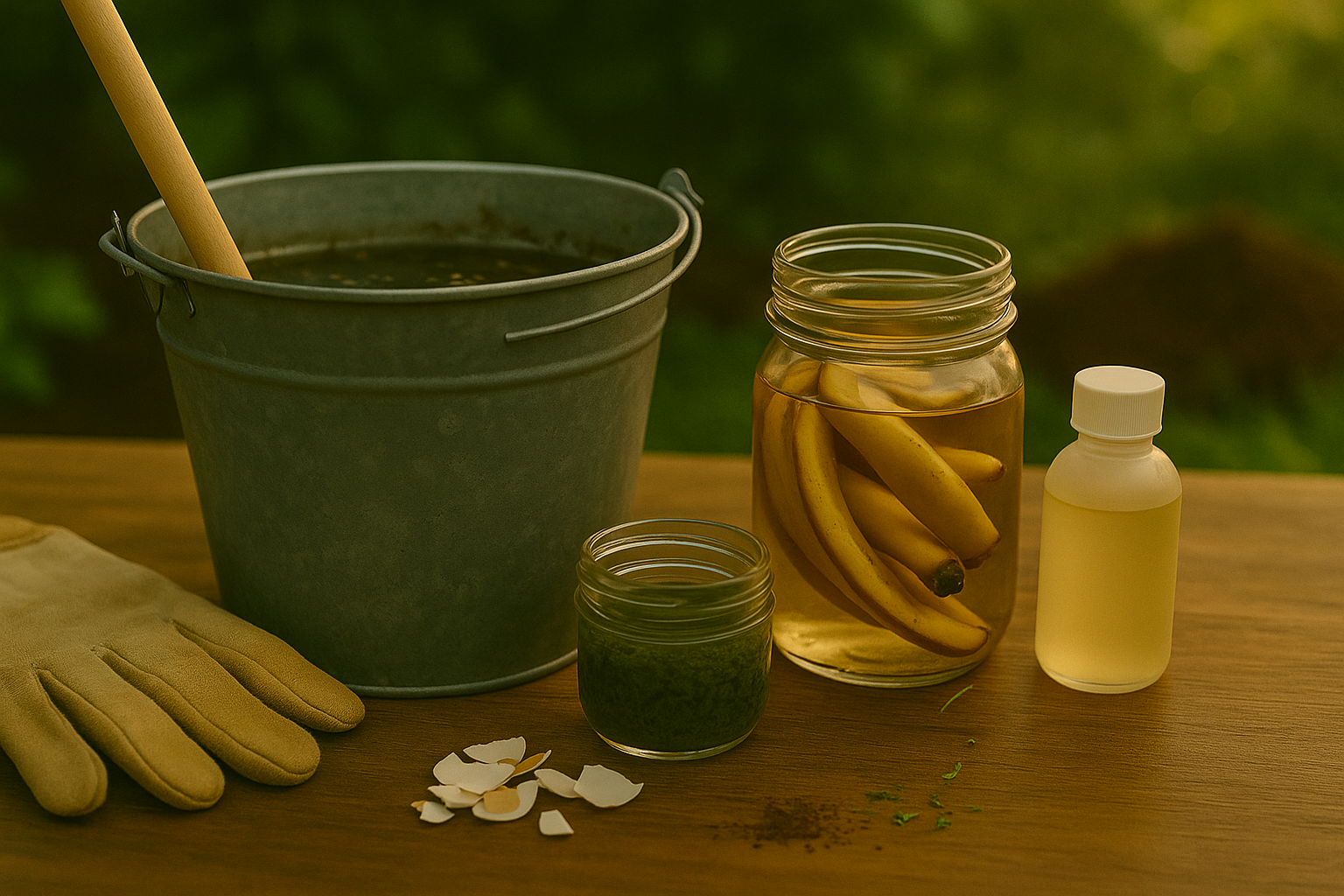
Making your own fertilizer at home is easier than you think and offers an eco-friendly way to boost your plants. One popular option is compost tea: simply place a handful of finished compost into a bucket of water, let it steep for a couple of days, stir occasionally, then strain and water your plants with the nutrient-rich liquid.
Another easy DIY alternative is diluted fish emulsion. Mix one tablespoon of fish emulsion with a gallon of water and use it to feed your garden; this provides a quick dose of nitrogen and trace minerals. For a potassium boost, banana water works wonders—soak banana peels in a jar of water for 24–48 hours, strain, and use the liquid to water your soil.
These homemade solutions are affordable, reduce waste, and limit harmful chemical runoff. However, their nutrient content can be unpredictable and generally lower than commercial fertilizers. Unlike store-bought products, results with DIY methods may take longer to appear, and it’s harder to tailor exact nutrients to your plants’ needs.
Still, for many home gardeners, the benefits of natural, gentle nourishment and sustainability outweigh the drawbacks. Try experimenting to see what works best for your plants and gardening style.
Conclusion
Proper fertilization is key to growing cilantro that’s not only lush and healthy but also bursting with vibrant flavor. By providing your plants with the right nutrients, you’ll see greener leaves, faster growth, and richer taste in every harvest. Whether you prefer organic options like compost and fish emulsion or conventional granular fertilizers, finding what works best for your garden can make all the difference.
Don’t settle for lackluster cilantro—explore different fertilizing methods and tailor your approach to your needs. Give your cilantro the nutrient boost it deserves and enjoy stronger, tastier harvests all season long!
